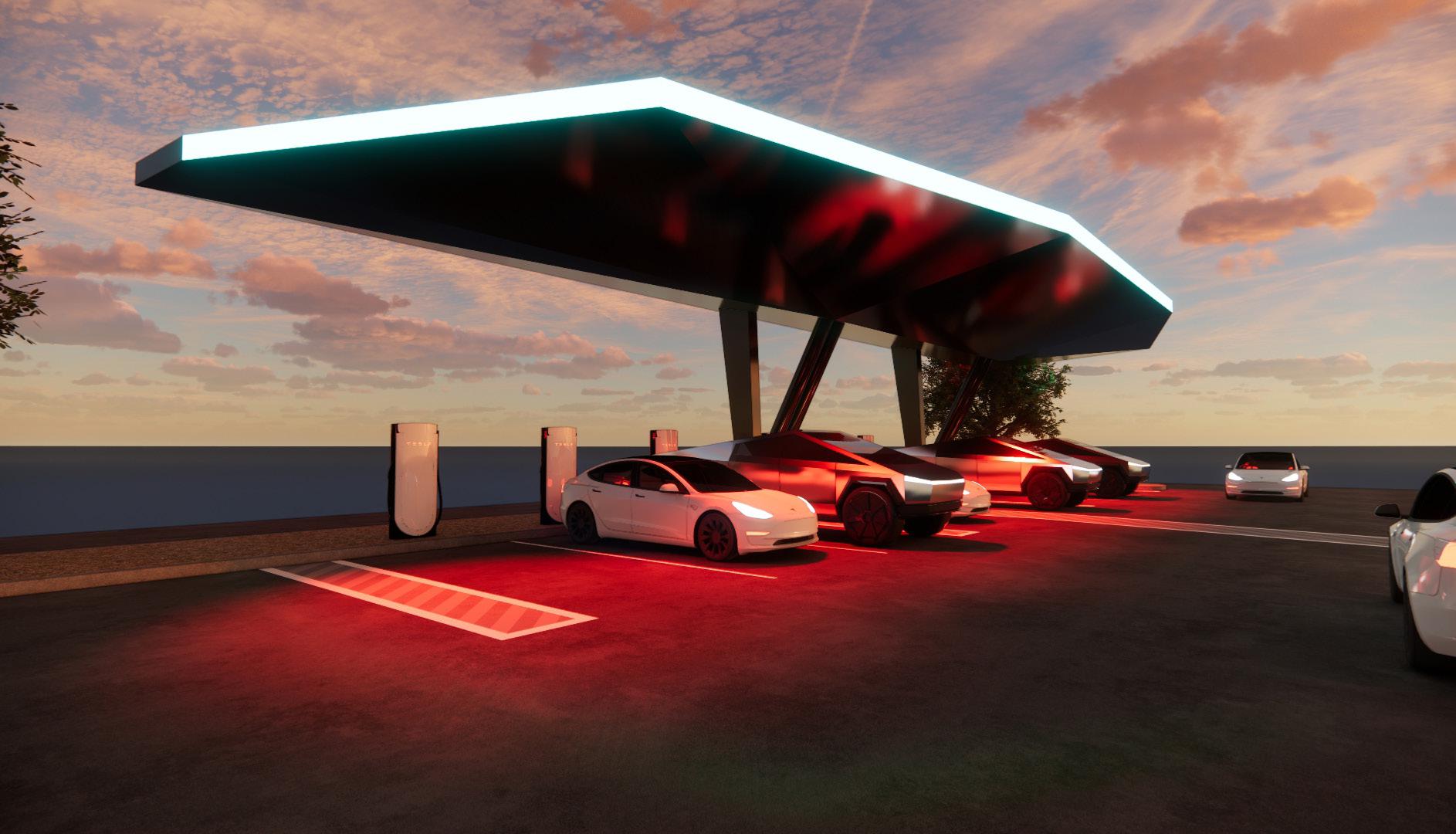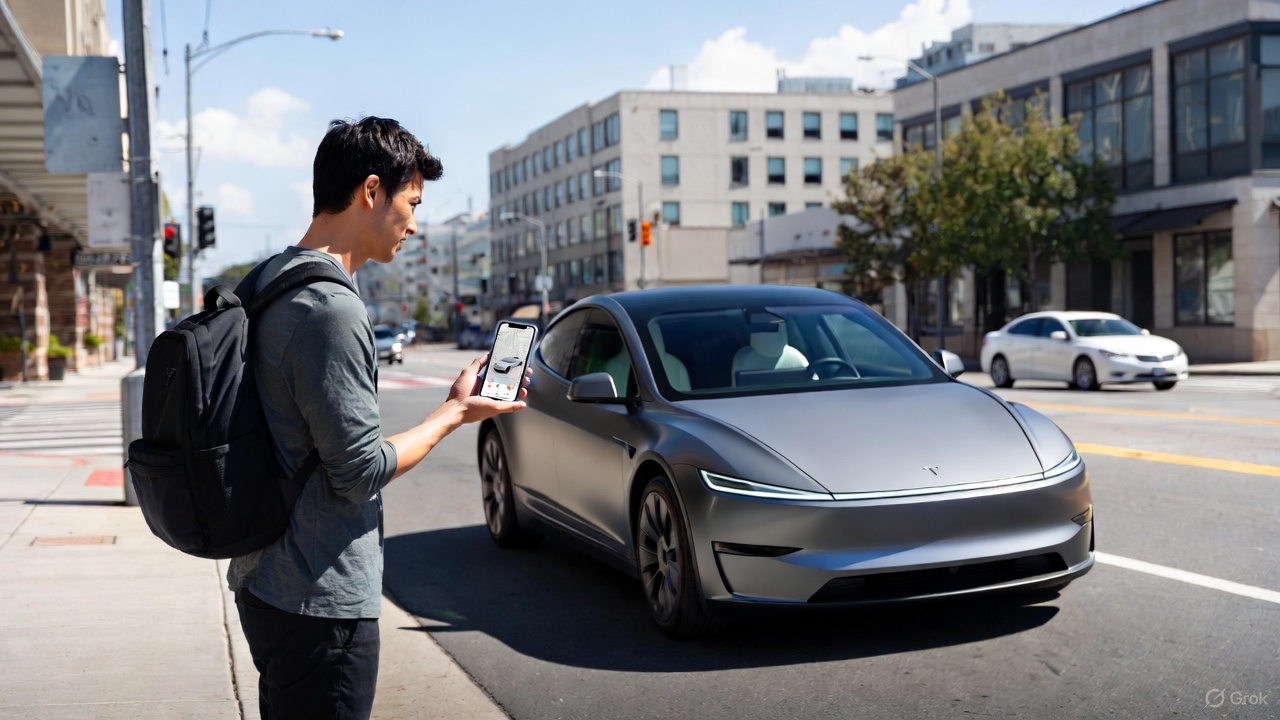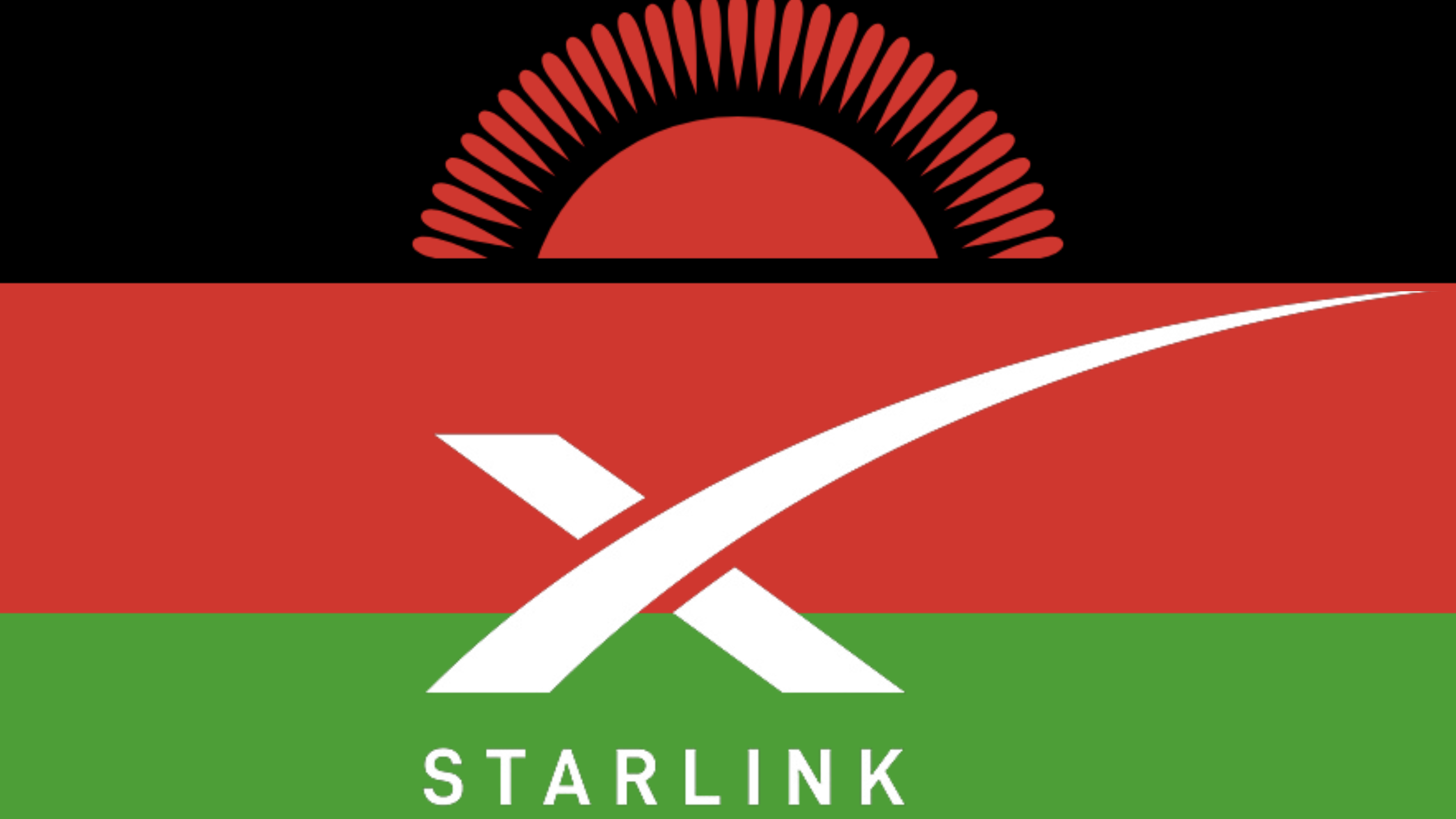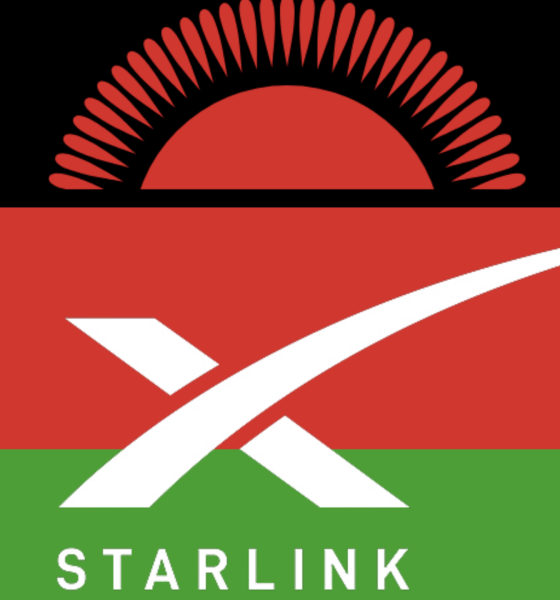Starlink internet is coming to Malawi. The Malawi Communications Regulatory Authority (MACRA) issued a public notice on Friday.
Twitter user @King_Emm_ shared a screenshot of the notice that at its 77th Board meeting held on October 21 in Blantyre, it granted its first-ever high-speed low latency broadband satellite internet service licenses to Starlink Lilongwe Limited, a company owned by SpaceX.
The story of how Starlink is coming to Malawi actually began at World Mobile Congress in Barcelona, Spain, where MACRA executives attended and met with Starlink executives.
@elonmusk elon musk in Africa🥳with starlikk pretty sure in this sector Malawi is going to change 😅 pic.twitter.com/dj39MJ25hW
— Grown Simba (@King_Emm_) October 21, 2022
MACRA Director General Daud Suleman said that the licenses were issued after Starlink’s successful application and subsequent negotiations that began in February 2022.
Following Starlink’s successful application, MACRA issued Starlink the following three licenses:
- Network Facilities License
- Network Services License
- Application Service License
The licenses are expected to be published in the Government Gazette and will be effective then. Suleman also shared the following statement on LinkedIn:
“In February 2022, whilst attending the World Mobile Congress (WMC) in Barcelona, we chanced a meeting with StarLink executives and our team; myself, Andrew Nyirenda, and Thokozani Chimbe were invited to a quick meeting.”
“That kicked into motion an exciting journey that, today, the 21st of October 2022, has reached a critical junction, network service license issued by MACRA. It’s been a tough and exciting rollercoaster ride.”
“Our legacy laws and regulations, based on a 2016 act, finds itself in the traditional regulatory corner; innovation ahead of regulatory framework! The delivery and technology being used by StarLink is a challenge to any regulator.”
“StarLink Lilongwe LTD, the Malawian trading entity, had engaged all necessary local authorities and their application before MACRA was evaluated just like any other. Next step is to gazette the licenses and assign the required spectrum, boooom!”
“Connecting the unconnected in Malawi has just jumped on steroids. Buckle up, this will fly fast!”
“Welcome to Malawi, StarLink.”
In May 2021, Malawi’s Minister of Information, Gospel Kazako, told Parliament that the government was rolling out a new initiative to improve connectivity and accelerate the acquisition of Information and Communications Technology (ICT) skills with a focus on the youth. Malawi’s Connect a School Program would replace another one that had been discontinued.
Kazako also highlighted several channels, including the high cost of installation, which was something that Starlink didn’t have. Kazako noted that Starlink’s installation kit, excluding shipping, was lower than the average cost of internet installation for a corporate client in the nation.
Starlink would be an opportunity to change the telecommunications sector in favor of the poor and digitally marginalized, according to The Nation. This thought is in line with what Elon Musk has said previously about Starlink.
“Education,” Elon Musk said, “is the path out of poverty and Internet access enables education.” Elon Musk said in September. In July, Elon Musk also spoke of how literacy and access to the internet were important solutions to solving poverty.
“Literacy and access to the internet, I think, are fundamentally helpful. Really, we’ve got to think beyond the United States. There are billions of people who have no internet connectivity at all–nothing. Or it’s like a very low bandwidth and it’s insanely expensive. For many parts of the world, this is the case–billions of people,” Elon Musk said.
Your feedback is essential. If you have any comments or concerns or see a typo, you can email me at johnna@teslarati.com. You can also reach me on Twitter at @JohnnaCrider1.
Teslarati is now on TikTok. Follow us for interactive news & more. Teslarati is now on TikTok. Follow us for interactive news & more. You can also follow Teslarati on LinkedIn, Twitter, Instagram, and Facebook.

News
Tesla gamifies Supercharging with new ‘Charging Passport’
It will also include things like badges for special charging spots, among other metrics that will show all of the different places people have traveled to plug in for range.

Tesla is gamifying its Supercharging experience by offering a new “Charging Passport,” hoping to add a new layer to the ownership experience.
While it is not part of the Holiday Update, it is rolling out around the same time and offers a handful of cool new features.
Tesla’s Charging Passport will be available within the smartphone app and will give a yearly summary of your charging experience, helping encapsulate your travel for that year.
It will also include things like badges for special charging spots, among other metrics that will show all of the different places people have traveled to plug in for range.
Tesla has just introduced “Charging Passport,” a new yearly summary of your charging.
• Charging badges: Iconic Charging badge (for visiting places like the Tesla Diner, Oasis Supercharger, etc), Explorer badge, green saver badge, etc.
• Total unique Superchargers visited
•… pic.twitter.com/c1DHTWXpj7— Sawyer Merritt (@SawyerMerritt) December 8, 2025
Tesla will include the following metrics within the new Charging Passport option within the Tesla app:
- Charging badges: Iconic charging badges for visiting places like the Tesla Diner, Oasis Supercharger, etc., Explorer Badge, and more
- Total Unique Superchargers Visited
- Total Charging Sessions
- Total Miles Added during Charging Sessions
- Top Charging Day
- Longest Trip
- Favorite Charging Locations
This will give people a unique way to see their travels throughout the year, and although it is not necessarily something that is needed or adds any genuine value, it is something that many owners will like to look back on. After all, things like Spotify Wrapped and Apple Music Replay have been a great way for people to see what music they listened to throughout the year.
This is essentially Tesla’s version of that.
With a handful of unique Superchargers already active, Tesla is also building some new ones, like a UFO-inspired location in New Mexico, near Roswell.
Tesla is building a new UFO-inspired Supercharger in the heart of Alien country
News
Tesla launches its coolest gift idea ever just a few weeks after it was announced
“Gift one month of Full Self-Driving (Supervised), which allows the vehicle to drive itself almost anywhere with minimal intervention.”

Tesla has launched its coolest gift idea ever, just a few weeks after it was announced.
Tesla is now giving owners the opportunity to gift Full Self-Driving for one month to friends or family through a new gifting program that was suggested to the company last month.
The program will enable people to send a fellow Tesla owner one month of the company’s semi-autonomous driving software, helping them to experience the Full Self-Driving suite and potentially help Tesla gain them as a subscriber of the program, or even an outright purchase.
Tesla is going to allow owners to purchase an FSD Subscription for another owner for different month options
You’ll be able to gift FSD to someone! https://t.co/V29dhf5URj
— TESLARATI (@Teslarati) November 3, 2025
Tesla has officially launched the program on its Shop. Sending one month of Full Self-Driving costs $112:
“Gift one month of Full Self-Driving (Supervised), which allows the vehicle to drive itself almost anywhere with minimal intervention. All sales are final. Can only be purchased and redeemed in the U.S. This gift card is valued at $112.00 and is intended to cover the price of one month of FSD (Supervised), including up to 13% sales tax. It is not guaranteed to cover the full monthly price if pricing or tax rates change. This gift card can be stored in Tesla Wallet and redeemed toward FSD (Supervised) or any other Tesla product or service that accepts gift card payments.”
Tesla has done a great job of expanding Full Self-Driving access over the past few years, especially by offering things like the Subscription program, free trials through referrals, and now this gift card program.
Gifting Full Self-Driving is another iteration of Tesla’s “butts in seats” strategy, which is its belief that it can flip consumers to its vehicles and products by simply letting people experience them.
There is also a reason behind pushing Full Self-Driving so hard, and it has to do with CEO Elon Musk’s compensation package. One tranche requires Musk to achieve a certain number of active paid Full Self-Driving subscriptions.
More people who try the suite are likely to pay for it over the long term.
News
Tesla expands Robotaxi app access once again, this time on a global scale
Tesla said recently it plans to launch Robotaxi in Miami, Houston, Las Vegas, Phoenix, and Dallas.

Tesla has expanded Robotaxi app access once again, but this time, it’s on a much broader scale as the company is offering the opportunity for those outside of North America to download the app.
Tesla Robotaxi is the company’s early-stage ride-hailing platform that is active in Texas, California, and Arizona, with more expansion within the United States planned for the near future.
Tesla said recently it plans to launch Robotaxi in Miami, Houston, Las Vegas, Phoenix, and Dallas.
The platform has massive potential, and Tesla is leaning on it to be a major contributor to even more disruption in the passenger transportation industry. So far, it has driven over 550,000 miles in total, with the vast majority of this coming from the Bay Area and Austin.
First Look at Tesla’s Robotaxi App: features, design, and more
However, Tesla is focusing primarily on rapid expansion, but most of this is reliant on the company’s ability to gain regulatory permission to operate the platform in various regions. The expansion plans go well outside of the U.S., as the company expanded the ability to download the app to more regions this past weekend.
So far, these are the areas it is available to download in:
- Japan
- Thailand
- Hong Kong
- South Korea
- Australia
- Taiwan
- Macau
- New Zealand
- Mexico
- U.S.
- Canada
Right now, while Tesla is focusing primarily on expansion, it is also working on other goals that have to do with making it more widely available to customers who want to grab a ride from a driverless vehicle.
One of the biggest goals it has is to eliminate safety monitors from its vehicles, which it currently utilizes in Austin in the passenger’s seat and in the driver’s seat in the Bay Area.
A few weeks ago, Tesla started implementing a new in-cabin data-sharing system, which will help support teams assist riders without anyone in the front of the car.
Tesla takes a step towards removal of Robotaxi service’s safety drivers
As Robotaxi expands into more regions, Tesla stands to gain tremendously through the deployment of the Full Self-Driving suite for personal cars, as well as driverless Robotaxis for those who are just hailing rides.
Things have gone well for Tesla in the early stages of the Robotaxi program, but expansion will truly be the test of how things operate going forward. Navigating local traffic laws and gaining approval from a regulatory standpoint will be the biggest hurdle to jump.










